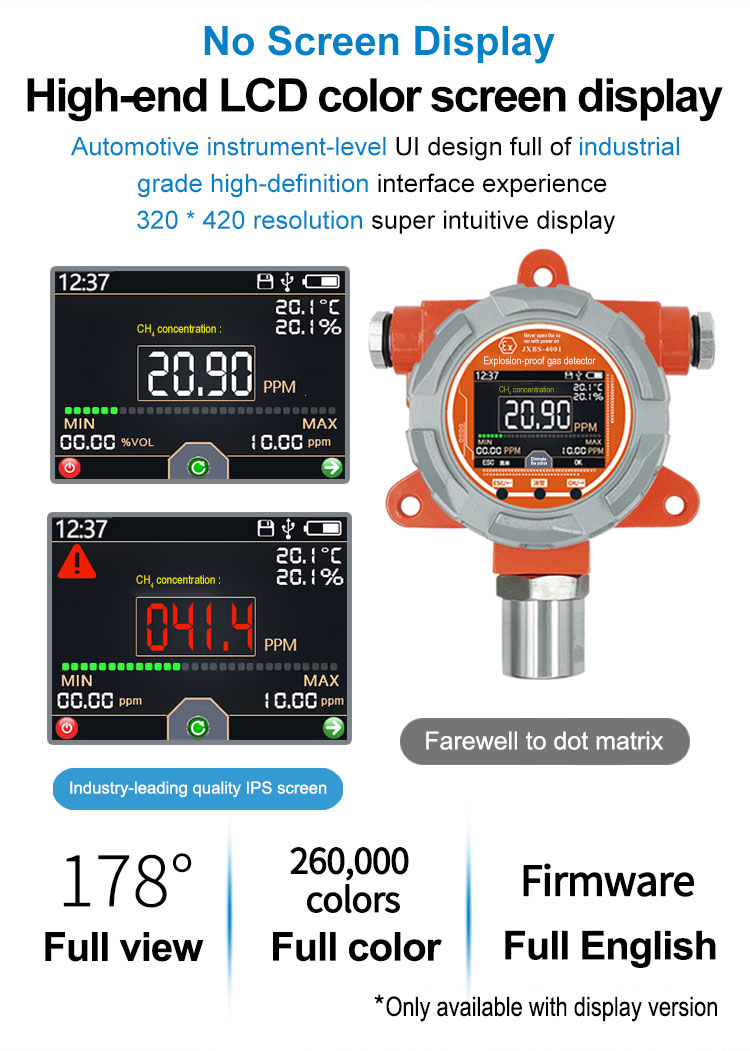We will discuss the importance of methane detector, followed by an in-depth discussion of the various methane detection techniques, including how they work, application areas, and advantages and disadvantages. Finally, we will look at the latest developments in methane detection technologies, including their technological innovations, practical applications, and future directions.

Methane, a gas composed of carbon and hydrogen, is an important greenhouse gas, even more powerful than carbon dioxide. Because of its ability to remain stable in the atmosphere for about 100 years, the cumulative effect of methane contributes to global warming. Therefore, the effective detection and monitoring of methane is an important part of protecting the environment. In recent years, with the progress of science and technology, methane detection technology has been continuously improved and developed, this paper will focus on the latest methane detector technology and its application in environmental protection.
Methane detection technology
Direct measurement method: This method mainly relies on a variety of sensors, such as thermal conductivity sensors, optical sensors and acoustic sensors. These sensors can directly measure methane concentrations in the air. However, this method has the disadvantage of being susceptible to interference from other gases, such as carbon dioxide.
Biodetection: This method uses methane-sensitive microorganisms, such as anaerobic bacteria, to detect methane concentrations. The advantage of biodetection is high sensitivity and specificity, but the disadvantage is that the biofilm needs to be replaced regularly.
Satellite remote sensing: This method uses remote sensing equipment on a satellite to detect atmospheric methane concentrations. While this approach has the advantage of large-scale monitoring, its spatial and temporal resolution is limited.
Iii. Latest Progress
Application of fiber optic methane detector:
With the development of optical fiber technology, optical fiber sensors have been widely used in methane detection. Fiber optic sensor has the advantages of anti-electromagnetic interference, high temperature and high pressure resistance, and high sensitivity and specificity for methane detection. In addition, optical fiber sensors can also achieve real-time monitoring of large areas through distributed sensor networks.

Combination of gas imaging technology: Gas imaging technology can realize real-time monitoring of methane distribution in the atmosphere and provide two-dimensional image information. Combined with machine learning and image processing technology, methane emission sources can be located and identified, which will help the environmental protection department to effectively supervise and manage methane emissions.
Drone mounted methane detector: The rapid development of drone technology provides a new idea for methane detection. By installing a methane detector on the drone, real-time monitoring of methane concentration in the atmosphere can be achieved. The UAV has the advantages of high flexibility and strong accessibility, and can be used for methane detection in confined Spaces, pipelines and other hard-to-reach places.
Application and development direction of methane detector
The new methane detection technology has achieved remarkable results in practical application. For example, optical fiber sensors are widely used in methane leakage detection of urban gas pipelines, effectively reducing the occurrence of gas leakage accidents. Gas imaging technology plays an important role in monitoring large emission sources such as oil fields and landfills, helping to reduce methane emissions.
In the future, the development of methane detection technology will pay more attention to accuracy and real-time, while also focusing on cross-sensitivity to other gases. In addition, with the development of artificial intelligence and big data technologies, future methane detection technologies will be able to enable more complex analytical and forecasting tasks, such as predicting weather conditions based on methane concentrations in the atmosphere or assessing the effects of environmental governance policies.
conclusion
With the continuous progress of science and technology, methane detection technology is also continuing to develop and innovate. These new technologies not only improve the accuracy and real-time detection of methane, but also provide more effective means for environmental protection. From leak detection in urban gas pipelines to regulation of large emission sources, new methane detection technologies are playing an increasingly important role. Looking forward to the future, we look forward to these new technologies playing a greater role in the field of environmental protection and working together to create a safer and more environmentally friendly environment.